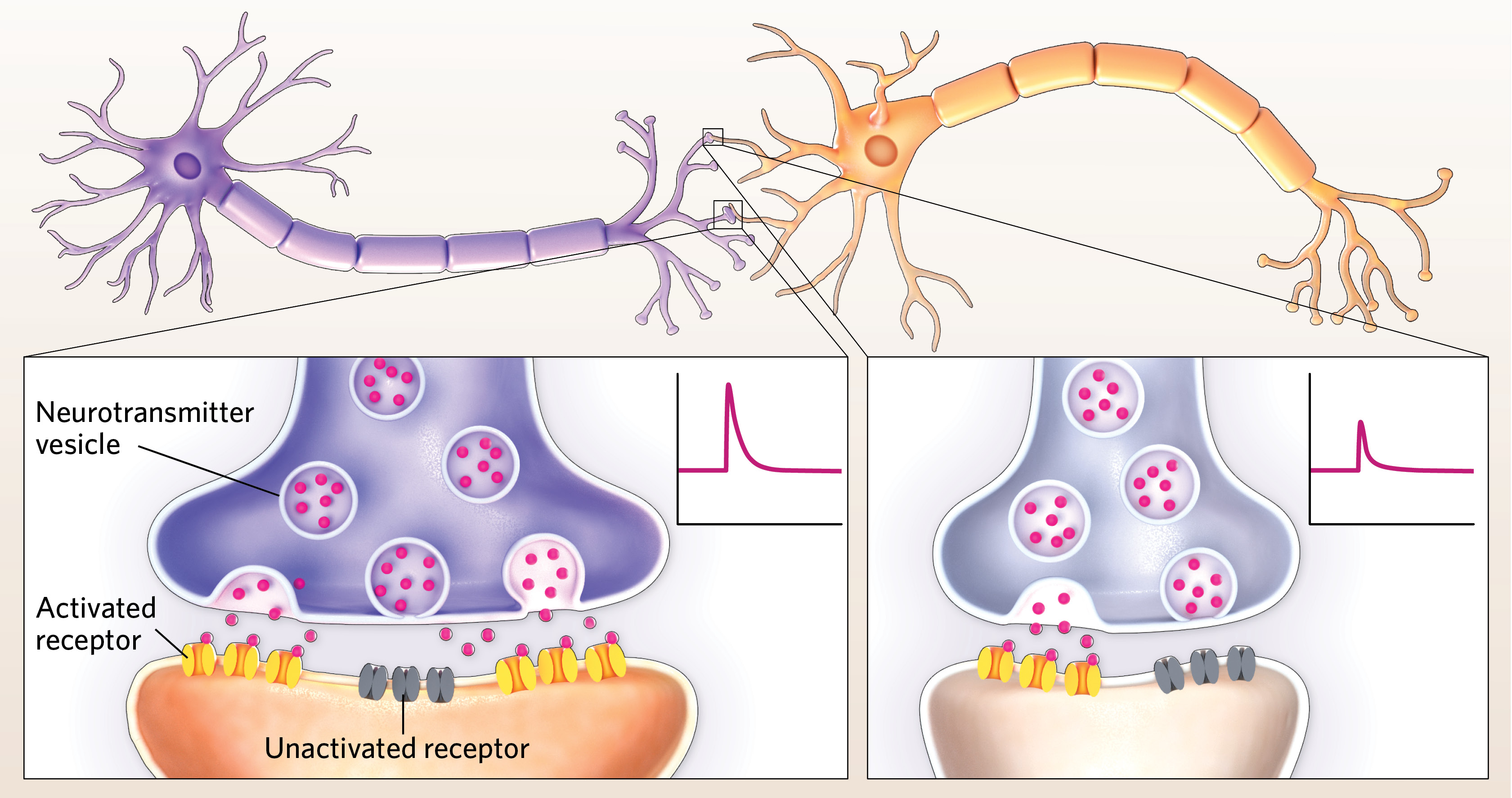ABOVE: © ISTOCK.COM, K_E_N
EDITOR’S CHOICE IN NEUROSCIENCE
The paper
S. Holler et al., “Structure and function of a neocortical synapse,” Nature, doi:10.1038/s41586-020-03134-2, 2021.
Brain cells use a language of neurotransmitters to pass messages to each other at junctions called synapses. A single neuron can have tens of thousands of synapses, allowing it to talk to thousands of other brain cells. These connections mediate information flow through the brain, and the plasticity of synapse strength is thought to underlie memory, learning, and other forms of cognition. Researchers have long suspected that synapses with greater surface areas are stronger, but have lacked experimental evidence for this, says Gregor Schuhknecht, a neuroscience postdoc at Harvard University.
To answer this question, Schuhknecht, then a graduate student at the Institute of Neuroinformatics at the University of Zurich and ETH Zurich, and his colleagues identified synapses between neuron pairs in the neocortex region of mouse brain slices. When an electrical impulse known as an action potential triggers the release of neurotransmitter-packed vesicles from a neuron’s axon terminal, these chemicals flow across the synapse and are recognized by receptors in the receiving neuron’s dendrite, which in turn may trigger an action potential in this cell. The team recorded the change in voltage of the receiving neuron with a tiny electrode to measure synapse strength and used electron microscopy to calculate synapse size. Sure enough, they found that synapses with a larger postsynaptic density area—the part
of the dendrite that houses neurotransmitter receptors—produced greater voltage changes.

Stephanie Rudolph, a neuroscientist at Albert Einstein College of Medicine who was not involved with the study, calls it a “technical tour de force” that confirms the relationship between synapse size and strength, a longstanding question in neuroscience.
Some researchers have measured neuron connectivity simply by counting the number of synapses between a neuron pair. The finding that larger synapses are stronger will allow connection strength to be assigned to a synapse based on its size, providing “a much more accurate picture of the connection,” says Schuhknecht. This should inform maps of the brain’s connectome that scientists are developing for fruit flies and mice, with the goal of understanding how information flows through the brain.
The strength of a synapse also depends on the number of neurotransmitter release sites in an axon terminal and the probability of a vesicle being released. Until now, most neuroscientists’ understanding was that synapses in the neocortex could release only a single vesicle of neurotransmitter per action potential, says Schuhknecht. But the research team calculated that the number of release sites exceeded the number of synapses between each neuron pair in the mouse brain slices, indicating that each synapse may be capable of releasing multiple vesicles. This means that the strength of synapses in the neocortex—the largest region in human brains—is more flexible than has been recognized.
“[This finding] profoundly alters the way we think about the predominant mode of synaptic transmission,” says Rudolph. “We can hypothesize that [multivesicular release] increases the ability of the brain to adapt to inside and outside challenges and allows a broader range of computational processing and information storage.”






